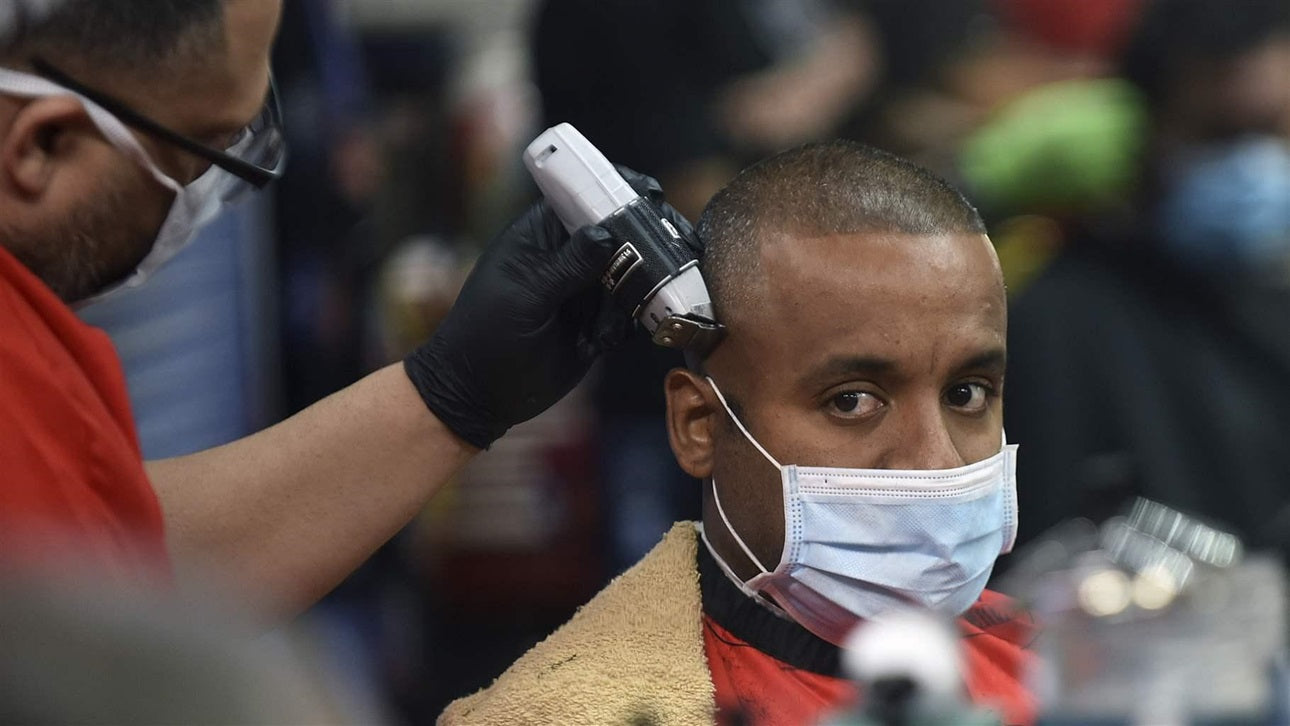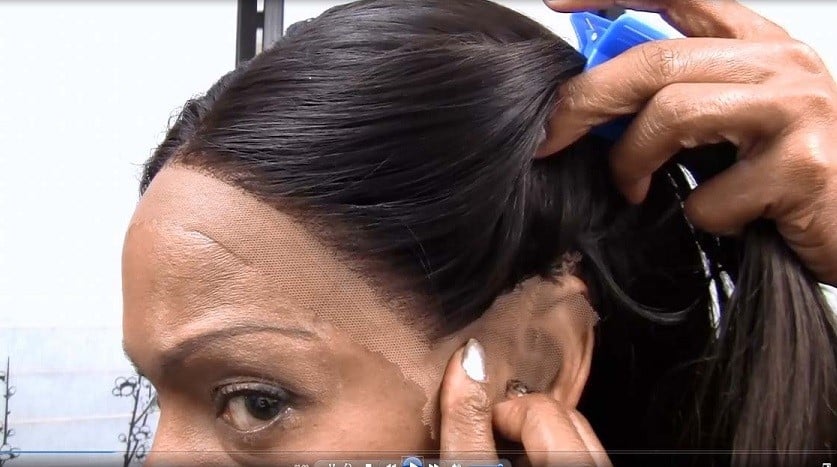A Comprehensive Guide to Hair Loss

Within self-confidence lies power.
However, it’s not about how we look, but how we think we look.
We all know that appearances aren’t everything, but when it comes to self-confidence, studies have shown that our perceived attractiveness is linked to how we view ourselves socially.
In fact, the more good looking we think we are the more likely we are to be outgoing, have better mental health and be more popular with the opposite sex. Not forgetting the higher we place ourselves amongst ‘social classes’.
You see:
Having an ego isn’t all that bad. Holding ourselves to our own higher standards is overall a good thing. Whether that’s a change in mindset, or physical changes, from the clothes we choose to the way we style our hair...
Hair Loss & Self-Perception
For many years hair has played an important role in society. Self-perceived attractiveness aside, hair is highly regarded across different cultures and religions.
It’s our crowning glory.
When we experience an uncontrollable loss of our tresses, we often lose a sense of self. Not only does our self-perceived attractiveness go out the window, but studies have shown the psychological damage of hair loss can be devastating.
As well as addressing the cause of hair loss, it’s vital to provide a hair loss solution to regain back self-worth in order to minimize the anxiety and depression that is all too common amongst hair loss sufferers.
The Different Types of Hair Loss
Before delving into hair loss solutions, if we want to best address hair loss concerns and needs, we need to have an understanding of the main causes of hair loss…
Alopecia
Alopecia is a term that is widely used. Medically it means hair loss, which is why alopecia conditions can be categorized further.
Alopecia Areata
An autoimmune condition, alopecia areata is where the body attacks the hair follicles, leading to hair loss. Bald spots usually occur in patches, but alopecia totalis and alopecia universalis refer to the loss of total head hair or head and body hair respectively.
Androgenetic Alopecia
A hereditary hair loss condition that develops with age, in women this is also known as female pattern hair loss. It’s thought that people with androgenetic alopecia are born with hormone sensitive hair follicles which reduce in size over time.
As the follicle gets smaller the hair thins until only a ‘fuzz’ remains. The typical pattern of hair loss, in this case, sees a reduction in the hair over the crown, spreading to the frontal scalp.
Involution Alopecia
Similar to androgenetic alopecia, involution alopecia sees a reduction in hair density with age, however, the same hormones are not believed to play a role.
Cicatricial Alopecia
In cicatricial alopecia, as the hair follicle is attacked it’s replaced with scar tissue. A specific type of this alopecia, known as central centrifugal cicatricial alopecia (CCCA), sees this process occur mainly at the crown of the head.
More common in African-American women, this condition is thought to be caused by hair styling treatments that damage the hair and scalp.
Traction Alopecia
Hair styles that require excessive tugging of the hair, and ultimately the scalp, can cause hair loss known as traction alopecia. Within this bracket of alopecias, we also see chignon alopecia, linked to the tightly pulled back bun style of the same namesake.
Drug-Related
Chemotherapy is a common cancer treatment in which the side effect of hair loss is well documented. Exposure from the chemicals and radiation associated with this treatment, and other similar medical treatments, can cause hair loss in the growing phase, also known as anagen effluvium.
Scalp Folliculitis
A bacterial condition of the scalp, folliculitis is when the hair follicle becomes inflamed. If left untreated or if the condition persists, folliculitis can eventually lead to hair loss.
Telogen Effluvium
Hair experiences a growth cycle and when this becomes disrupted it can result in the thinning of hair. This is also known as telogen effluvium, when hairs become more synced in their cycle, causing an abnormal amount to shed at the same time.
Trichotillomania
An impulsive disorder, Trichotillomania sees sufferers pull their own hair out. Whilst more common in children, it can affect adults too.
Non-Invasive Hair Loss Solutions
Depending on the type of hair loss you are experiencing, regrowth may be a case of patience. If regrowth is not on the cards, or the volume and growth time isn’t what you were expecting, it may be time to consider a non-invasive hair loss solution.
The truth is:
There’s plenty of research to show the mood-boosting effects of wigs and hairpieces for alopecia and cancer patients. The feel-good factor of full, luscious locks is one less worry where hair loss related conditions are concerned. With their popularity on the rise, technology has improved, making them undetectable.

Addressing Your Needs
In some cases, a full wig may be the ideal solution, but if your hair loss condition is more contained to a certain area there are other hairpiece solutions you can explore...
Patchy Hair Loss
Alopecia areata sufferers and those with trichotillomania may have small bald patches on the head. If you feel your natural hair does not cover these, or more volume is desired, hair extensions would be a viable option. These would be attached to nearby hairs for a fuller look.
Hairline and Crown Hairloss
Experienced by those with female pattern hair loss, scalp folliculitis or involution, cicatricial or traction alopecia, a frontal or closure hair piece offers great coverage for the localized areas of hair loss.
Covering the crown whilst offering the option to part the hair, a closure covers the top without the need for a full wig.

A lace closure blends seamlessly into the scalp
On the other hand, a frontal extends from ear to ear and offers more flexibility with styling. It’s recommended to opt for a 360-degree frontal if hair loss extends around the full hairline.

A 360-degree frontal offers great coverage and versatility.
Total Hairloss
When total hair loss occurs a wig is the best option. This is commonly seen in cancer patients and alopecia totalis/universalis diagnoses. Extreme scalp folliculitis can also develop into total hair loss.

A full wig covers the entirety of your head.
Blending naturally into your scalp, you can choose a length and texture to suit your wants. In fact, you may be covered by your insurance for a wig, which you can read more about here. In order to minimize scalp irritation, they can be custom made to fit you.
Hair Prosthesis: A Solution & Confidence Cure
Whilst hair loss is an indicator of an underlying condition, we don’t have to let it knock our confidence. It’s been shown that wigs can raise self-esteem in those with alopecia, making them an important component when it comes to addressing the emotional turmoil that hair loss brings.

Celebrities worldwide have put wigs and hairpieces on the map, highlighting the creativity and versatility they offer. From providing the coverage we want to allowing us to have the texture we’ve always dreamed of.
Whilst hair loss may be an inevitable consequence as a result of these conditions, hair prostheses works towards establishing a healthier self-perception, putting self-love back in the picture.
References
- Belmi, P. and Neale, M. (2014). Mirror, mirror on the wall, who’s the fairest of them all? Thinking that one is attractive increases the tendency to support inequality. Organizational Behavior and Human Decision Processes, 124(2), pp.133-149.
- Hunt, N. and McHale, S. (2005). The psychological impact of alopecia. BMJ, 331(7522), pp.951-953.
- Birch, M., Lalla, S. and Messenger, A. (2002). Female pattern hair loss. Clinical and Experimental Dermatology, 27(5), pp.383-388.
- Hairclub.com. (2019). Types of Hair Loss Conditions | Hair Club. [online] Available at: https://www.hairclub.com/why-is-my-hair-falling-out/types-of-hair-loss/ [Accessed 5 Feb. 2019].
- Ashton, D. (2019). Alopecia: Types of Hair Loss and How to Identify Them. [online] Disabled World. Available at: https://www.disabled-world.com/health/dermatology/hair/hair-loss.php [Accessed 5 Feb. 2019].
- Patel, M., Harrison, S. and Sinclair, R. (2013). Drugs and Hair Loss. Dermatologic Clinics, 31(1), pp.67-73.
- Walsh, K. and McDougle, C. (2001). Trichotillomania. American Journal of Clinical Dermatology, 2(5), pp.327-333.
- Webmd.com. (2019). The Basics of Hair Loss. [online] WebMD. Available at: https://www.webmd.com/skin-problems-and-treatments/hair-loss/understanding-hair-loss-basics#1 [Accessed 5 Feb. 2019].
- Harrison, S. and Sinclair, R. (2002). Telogen effluvium. Clinical and Experimental Dermatology, 27(5), pp.389-395.
- Camacho-Martínez, F. (2009). Hair Loss in Women. Seminars in Cutaneous Medicine and Surgery, 28(1), pp.19-32.




Comments